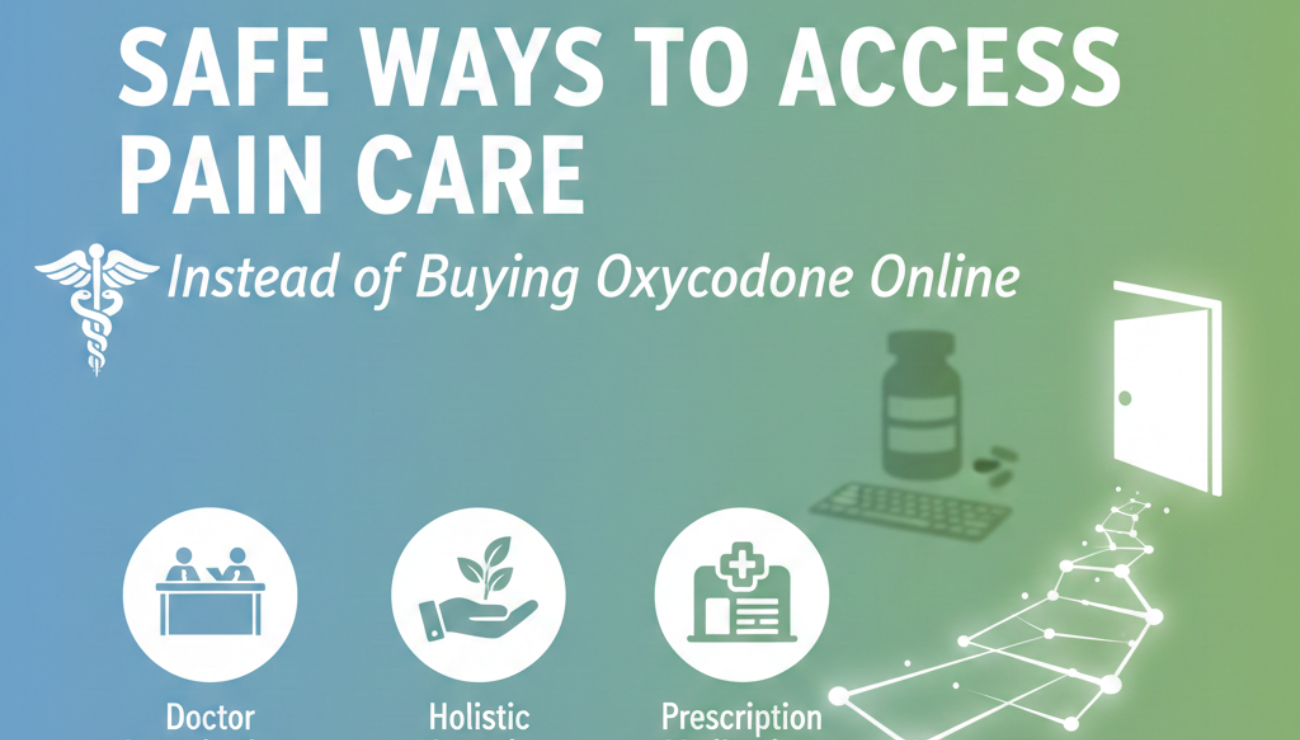
Buying Oxycodone Online Imagine waking up each day with manageable pain, free from the fear of addiction or legal troubles associated with purchasing medications like oxycodone online. The alarming rise in online purchases of opioids has brought to light significant risks, including addiction, overdose, and unregulated sources that could endanger your health. The good news is that there are safe, effective alternatives for pain management that can help you reclaim control over your life without the need for harmful substances. Here’s everything you need to know about safe ways to access pain care instead of buying oxycodone online.
Decoding Safe Pain Management Solutions
What Is Pain Management?
Pain management encompasses a variety of strategies designed to alleviate pain and improve quality of life. It includes both pharmacological approaches, such as medications, and non-pharmacological methods, like physical therapy and psychological support. Understanding its significance is crucial for those experiencing both acute and chronic pain.
Types of Pain
Pain is generally categorized into two types: acute and chronic. Acute pain is short-term, often linked to injury, and typically resolves with treatment. Chronic pain, however, persists over a longer period and can result from various conditions, leading to ongoing challenges in daily life.
Traditional vs. Alternative Methods
Traditional pain management often relies heavily on medications, including opioids, which can lead to dependency. In contrast, alternative methods may encompass physical therapy, mindfulness practices, and other holistic approaches. Recognizing these differences can empower individuals to make informed decisions about their pain care.
The Hidden Impact of Safe Pain Care on Your Well-Being
Health Risks of Buying Oxycodone Online
Purchasing oxycodone online can lead to serious health risks, including overdose and exposure to counterfeit medications. These substances may not only fail to relieve pain but also introduce harmful side effects, further complicating health issues.
Legal Implications
The laws governing online sales of prescription medications are complex and vary by region. Understanding these regulations is essential to avoid potential legal issues associated with obtaining medications from unverified sources.
Benefits of Safe Alternatives
Safe pain management alternatives can lead to improved health outcomes, reduced healthcare costs, and enhanced emotional well-being. Embracing these options can be a transformative experience, allowing individuals to live more fulfilling lives without the shadow of addiction hanging over them.
The Mechanics Behind Effective Pain Care
Medical Consultation
Seeking professional advice is the cornerstone of effective pain management. A medical consultation helps tailor a plan specific to your needs, ensuring that all aspects of your pain are considered.
Comprehensive Pain Assessment
Healthcare providers utilize various methods to assess pain, including questionnaires and physical examinations, ensuring that treatment plans are evidence-based and tailored to individual experiences.
Treatment Plans
Personalized treatment plans may involve a mix of therapies, medications, and lifestyle changes, all designed to address individual pain experiences. This approach increases the likelihood of successful pain management.
Follow-Up and Adjustment
Regular follow-ups are vital for adjusting treatment plans based on patient feedback and evolving needs. This ongoing process ensures that the management strategies remain effective and relevant to the patient’s condition.
Unlocking Value with Safe Pain Care Alternatives
Alternative Therapies
Various alternative therapies, such as acupuncture and cognitive-behavioral therapy, offer valuable options for pain relief without the risks associated with opioids. These methods focus on treating the underlying causes of pain rather than merely masking the symptoms.
Lifestyle Changes
Incorporating healthier lifestyle choices, including diet and exercise, can significantly impact pain management and overall health. These changes often enhance the body’s natural healing processes and improve quality of life.
Non-Opioid Medications
There are numerous non-opioid medications available that can effectively manage pain while avoiding the risks associated with opioid use. These alternatives provide safe options for those seeking relief without the potential for addiction.
Support Systems
Engaging family and support groups can enhance the effectiveness of pain management by providing emotional support and encouragement. This network can play a crucial role in helping individuals adhere to their treatment plans.
Navigating Pain Management Pitfalls
Self-Medication
Self-diagnosing and self-medicating can lead to dangerous outcomes. It’s crucial to seek professional guidance instead to ensure that treatment is both appropriate and safe.
Ignoring Professional Help
Failure to consult healthcare professionals can result in ineffective treatment strategies and worsening conditions. Engaging with professionals ensures that individuals receive the most suitable care for their specific needs.
Disregarding Follow-Up Care
Neglecting follow-up appointments can hinder progress and may lead to a lack of necessary adjustments in treatment plans. Continuous monitoring is essential for effective pain management.
Mastering Safe Pain Management: Pro Strategies
Establishing a Pain Management Plan
Creating a comprehensive pain management plan involves setting clear goals and identifying appropriate therapies. Collaboration with healthcare providers is key to developing an effective strategy.
Educating Yourself
Understanding your condition and available treatment options is crucial for making informed decisions. Knowledge empowers patients to take an active role in their pain management journey.
Open Communication with Providers
Maintaining an open dialogue with healthcare providers can improve treatment outcomes and ensure patient needs are met. This communication fosters a collaborative approach to pain care.
Your Safe Pain Care Action Plan
Recognizing Worsening Symptoms
It’s important to know the signs that require immediate medical attention, ensuring timely intervention. Being aware of these symptoms can save lives and improve treatment outcomes.
Chronic Pain vs. Acute Pain
Understanding the differences between chronic and acute pain helps in recognizing when to seek help. This knowledge is essential for effective pain management.
Emergency Situations
Some pain conditions necessitate urgent care. Being able to identify these situations can lead to better health outcomes and prevent complications.

Leave a Reply